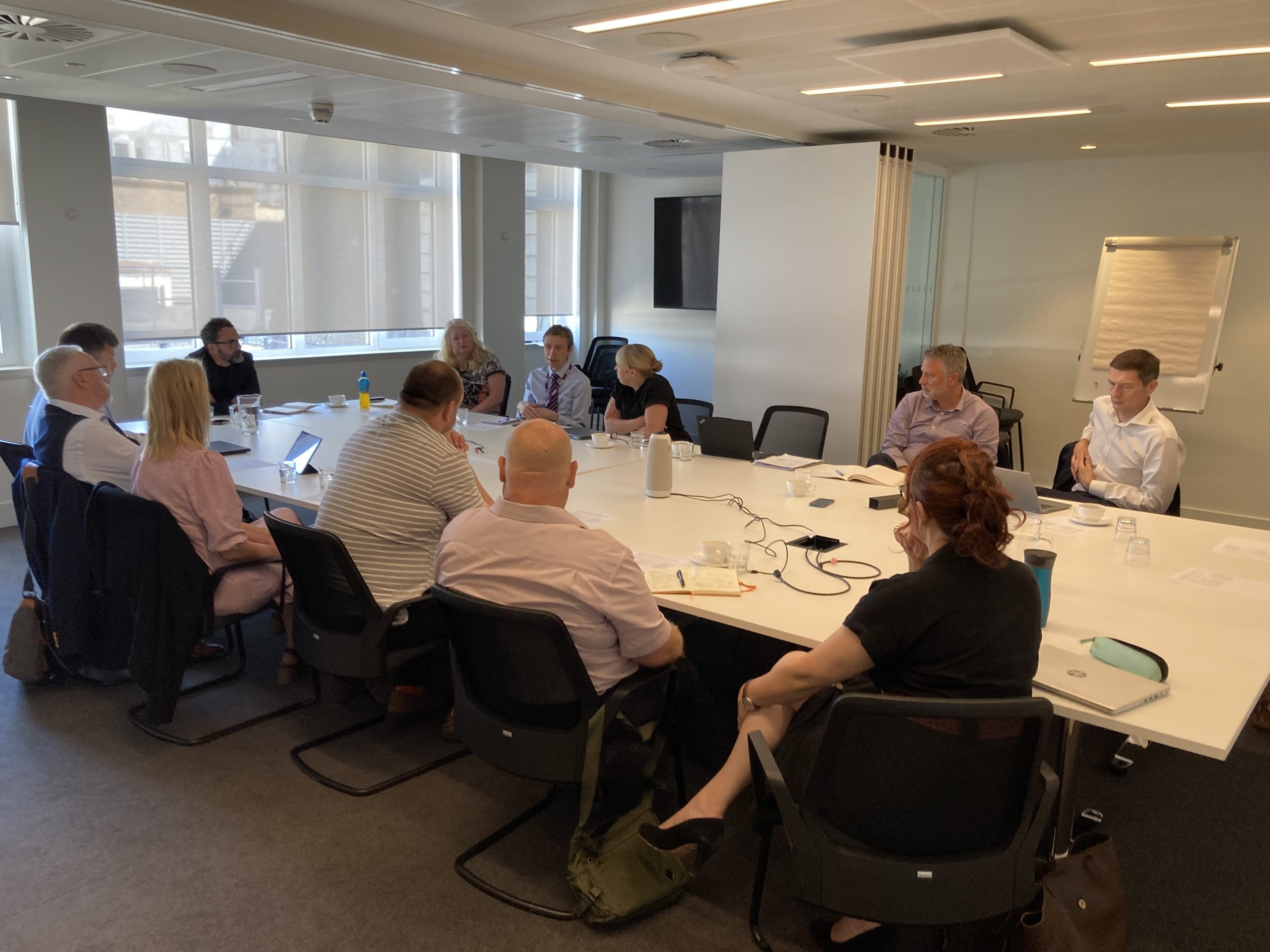Frustration was expressed that the transformation element of LGR – digital change, in particular – is being neglected in the rush for councils to agree new organisational footprints. Attendees urged a great focus on tech and data use to ensure new unitary councils were more than larger versions of their predecessor authorities.
Several attendees said digital was likely to be part of the next phase of LGR discussions in their area, once the boundaries of the new organisations had been determined. Other officers said it was impossible to talk specifics on digital until the footprint was known.
Digital integration
The ease of integrating existing systems was widely discussed. Many noted discrepancies in the tech and digital expertise and kit between councils in their county. They saw LGR as an opportunity to bring about a more level playing field with stragglers benefitting from the knowhow of leading councils. One attendee from a county area in which districts collaborate on technology said that while some systems were shared between councils already, others were not.
Widespread concerns were expressed over the patched-up nature of existing systems. One officer described a system bought 25 years ago which had been repeatedly upgraded so in effect six eras of technology were running “under one hood”. They described the behind-the-scenes view as being “horrific”.
An attendee said a register of tech had revealed at least 120 different digital systems were in use in councils across their county and they hoped that standardisation could lead to economies of scale and greater joining up of services. Another officer described as “frightening” the number of different systems likely to be in use across nationwide. There was widespread agreement that it would be impossible to standardise systems until some time after vesting day of new unitary authorities. Some said standardisation was likely to be many years away.
Some expressed optimism that Microsoft Fabric, an AI-powered analytics platform, could help facilitate the integration of systems.
Suppliers
The uncertainty was leading many local dilemmas, relating to councils’ relationships with suppliers. One officer said their council’s ageing finance system was about to become unsupported by its supplier. The council did not know if they could get by without purchasing a new system when they would ideally wait until after LGR for the new unitary to implement a common financial system.
Concern was expressed about how data could be moved between existing and new platforms, and the potential for high costs to be incurred when this took place. Extra support from suppliers was likely to be required to extract data – and one attendee reported a supplier had quoted £20,000 for a single extract from one service alone. Another officer said a supplier had indicated such data extracts invalidated their contract, when the council would need the system in place for another three years. They anticipated it would cost their council several million pounds to extract all the data required from existing systems.
An attendee said suppliers did not have the capacity to integrate legacy systems, some of which had been in operation for as long as 30 or 40 years. There was little knowledge of this old tech in suppliers’ current workforces. One of their suppliers had the capacity to integrate just two revenues and benefits systems nationwide a year, they said.
Costs
There was widespread acceptance that digital transformation would be costly and have to compete with other council priorities for funding. The danger is that councils would be forced to settle for ‘more of the same’, due to limited budgets. One attendee said their local councils had agreed to prioritise developing a single council tax system by vesting day.
There was optimism that fewer councils could mean new organisations could drive a harder bargain with suppliers. They could cut costs by insisting on a standard operating model, for instance.
One attendee urged realism from the Treasury if it saw LGR as being a means of cutting costs. They said it would not save money in the short run but the big win would be the opportunity to reengineer services to focus on prevention and cutting duplication. If obesity cost the NHS £30bn a year, using reorganisation to make progress on its prevention was likely to dwarf any claimed direct savings from LGR. This redesign would lead to real savings in the long-run, another officer said.
The Treasury was always likely to dispute theoretical savings, several participants said, so real case studies of actual savings from service redesign were essential. The use of Copilot, another AI tool, to cut the time social workers spent writing up notes was seen as one possible tangible example.
Workforce
One officer said their local councils’ staffing was only sufficient to run existing systems, not to launch projects to transform services.
The lack of digital skills across the workforce was seen as a big problem. Suggestions ranged from AI training to something as basic as touch typing.
It was also noted that staff used systems, software and programs in different ways – some more effectively than others. Not all staff knew how to operate Microsoft Teams to derive maximum benefit. Good practice should be promoted, attendees said. They urged an end to the “customisation” of software to make it adapt to a council’s existing way of doing things when the system would work most effectively if used as intended by the manufacturer.
To do all of this, digital leadership was required from the top of the organisation.
Transformation
Transformation should be the built-in operating model for new unitaries, attendees said, with customer experience being a priority area.
One officer said the objective of reorganisation should be to simplify public services to enhance value for money and to improve outcomes. They were enthusiastic about vertical integration, improving access to services and removing duplication.
There were mixed thoughts about adult and children’s social care. Disaggregation of existing county services was regarded as difficult by one attendee who nevertheless was excited by the prospect of using tech to integrate social care with public health and other public services as part of a new focus on prevention.
Data
The availability of a wide range of datasets was seen as essential to boost prevention and target interventions, attendees said. Data should be drilled down to specific postcodes. To give a full picture it should come from districts, county councils, the voluntary sector and other public services.
One attendee noted that data was often formatted inconsistently, prompting another to suggest that LGR should empower councils to go to system providers to demand consistency.
A discrepancy was also noted between the level of data sharing between different organisations in places. While some areas had full data sharing between health and social care, some councils didn’t even share it between directorates.
GDPR and the unwillingness of the Department of Work & Pensions to share information were described as “disenablers” of data sharing. Even some council contracts stipulated that AI could not be used on any data, hampering the scope for predictive analytics.





